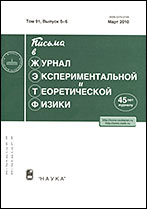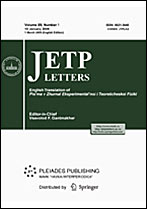|
This article is cited in 2 scientific papers (total in 2 papers)
FIELDS, PARTICLES, AND NUCLEI
Quasi-Cherenkov mechanism of radiation from relativistic electrons flying near a multilayer prism target
G. A. Naumenko, A. P. Potylitsyn, M. V. Shevelev, D. A. Shkitov, K. E. Popov, A. V. Vukolov
Tomsk Polytechnic University, Tomsk, 634050 Russia
Abstract:
The angular characteristics of millimeter radiation generated by a 6.1-MeV electron beam flying near a multilayer prism target consisting of conducting plates separated by vacuum gaps and near a homogeneous Teflon prism have been studied experimentally. The angular distributions of radiation from both targets have been compared. It has been shown that the angular distribution for the Teflon prism is in good agreement with the classical theory of Cherenkov radiation, whereas the evolution of angular distributions for the multilayer target is inconsistent with known expressions with a fixed effective refractive index. Radiation from the multilayer target (quasi-Cherenkov radiation) should assumingly be described by a tensor refractive index.
Received: 31.12.2019
Revised: 11.02.2020
Accepted: 12.02.2020
Citation:
G. A. Naumenko, A. P. Potylitsyn, M. V. Shevelev, D. A. Shkitov, K. E. Popov, A. V. Vukolov, “Quasi-Cherenkov mechanism of radiation from relativistic electrons flying near a multilayer prism target”, Pis'ma v Zh. Èksper. Teoret. Fiz., 111:5 (2020), 295–299; JETP Letters, 111:5 (2020), 255–259
Linking options:
https://www.mathnet.ru/eng/jetpl6119 https://www.mathnet.ru/eng/jetpl/v111/i5/p295
|


| Statistics & downloads: |
| Abstract page: | 145 | | Full-text PDF : | 16 | | References: | 27 | | First page: | 5 |
|





 Contact us:
Contact us: Terms of Use
Terms of Use
 Registration to the website
Registration to the website Logotypes
Logotypes








 Citation in format
Citation in format 
